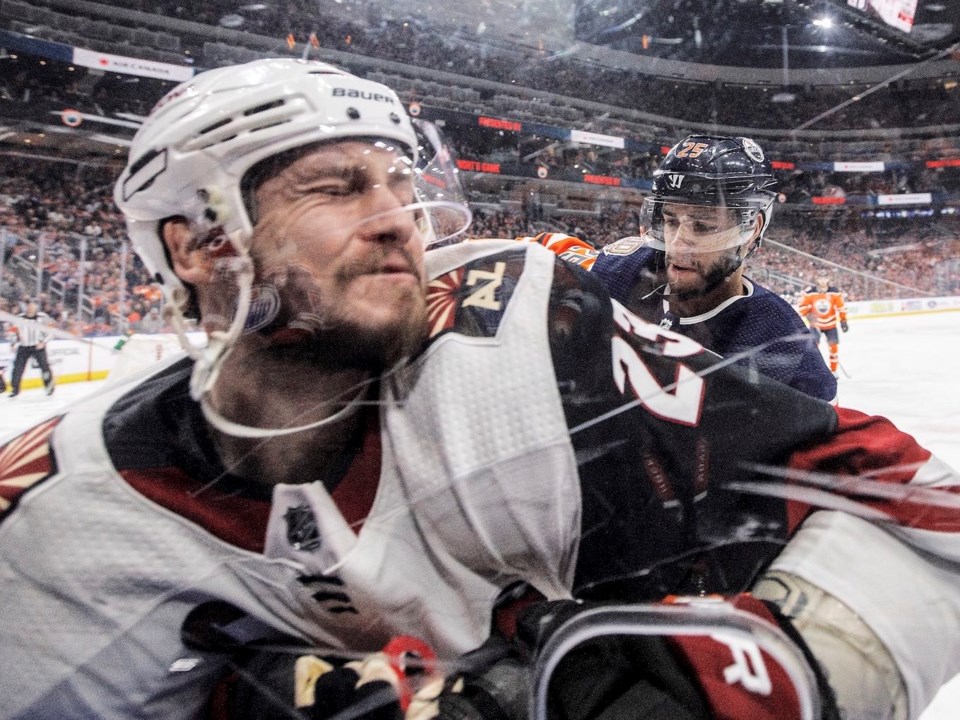Oliver Ekman-Larsson is in control.
When Ekman-Larsson signed his current contract, it was with the understanding that he would be in Arizona long-term. The 8-year deal worth $8.25 million per year came with a full no-movement clause. Now, just two years into his deal, Ekman-Larsson has been forced to use that clause.
The Coyotes want to trade Ekman-Larsson, presumably to initiate a full-scale rebuild. The actual dollars of his deal go up in the coming season to $10.5 million and the COVID-19 pandemic has taken a chunk out of NHL revenues, so that might have something to do with it as well.
Perhaps the Coyotes were hoping to be in a better place financially at this point in his contract, with some playoff home games to provide a boost. Instead, the Coyotes played their first playoff games in eight years in a quarantined bubble in Edmonton in front of no fans.
Whatever their reasons, the Coyotes are looking to move their captain, but he’s severely limited their options by using the only leverage he has: his no-movement clause. Ekman-Larsson has made it known to the Coyotes that he will only accept a trade to one of two teams: the Boston Bruins or the Vancouver Canucks.
To go with that very limited list, Ekman-Larsson has also set a deadline. If he’s not traded by the start of free agency on Friday, he’ll shut the door on a trade entirely and stay in Arizona.
Oliver Ekman-Larsson through his agent, Kevin Epp has imposed a Friday deadline for a trade to either Boston or Vancouver. “We think the best option for a trade is before free agency,” Epp told TSN. “If no deal by Friday, Oliver is staying in Arizona.”
— Darren Dreger (@DarrenDreger) October 6, 2020
This puts Coyotes GM Bill Armstrong in a bind. The Bruins and Canucks both know that their offer only has to be better than one other team; they’re not in a bidding war. And if Armstrong doesn’t like either of the offers, he’ll be left with a disgruntled captain and a $10.5 million bill to pay.
Ekman-Larsson’s limited list changes the situation for the Canucks. Instead of having to give up a top-tier player like Brock Boeser, the asking price could be lower: next year’s first-round pick and a good prospect to start, with other moving parts. More importantly, the Canucks could potentially kill two birds with one stone and shed some salary from their bottom six in the process.
It’s still a risk for the Canucks. Ekman-Larsson’s game has seriously declined from its heights in the 2015-16 season and there’s no guarantee that he will bounce back in a different situation. His contract takes him all the way through 2027, when he’ll be 36 years old and no longer the player he is today.
Asking the Coyotes to retain some salary would help — Ekman-Larsson for $6 million or so is a lot more palatable than $8.25 million — but it could still cause problems in the future.
There’s also the question of where Ekman-Larsson would fit. He wouldn’t get first unit power play time with Quinn Hughes ahead of him, which would limit his offensive output, and he has some defensive red flags. In Arizona this past season, he wasn’t as good at transitioning the puck up ice as in previous years, which is concerning.
The optimistic view would be that placing Ekman-Larsson in a different situation in Vancouver would see him thrive. Perhaps feeding the puck to the likes of Elias Pettersson and J.T. Miller would be a step up from Clayton Keller and Taylor Hall and he could put up 40+ points without power play time on the first unit.
The pessimistic view is that Ekman-Larsson wouldn’t necessarily improve the Canucks’ actual defending in their own zone and a lack of power play time would limit Ekman-Larsson’s impact offensively, with a contract that hinders the Canucks’ ability to improve their lineup in other areas.
The cost of acquiring Ekman-Larsson might be lower short-term but it could still be pricey long-term.




